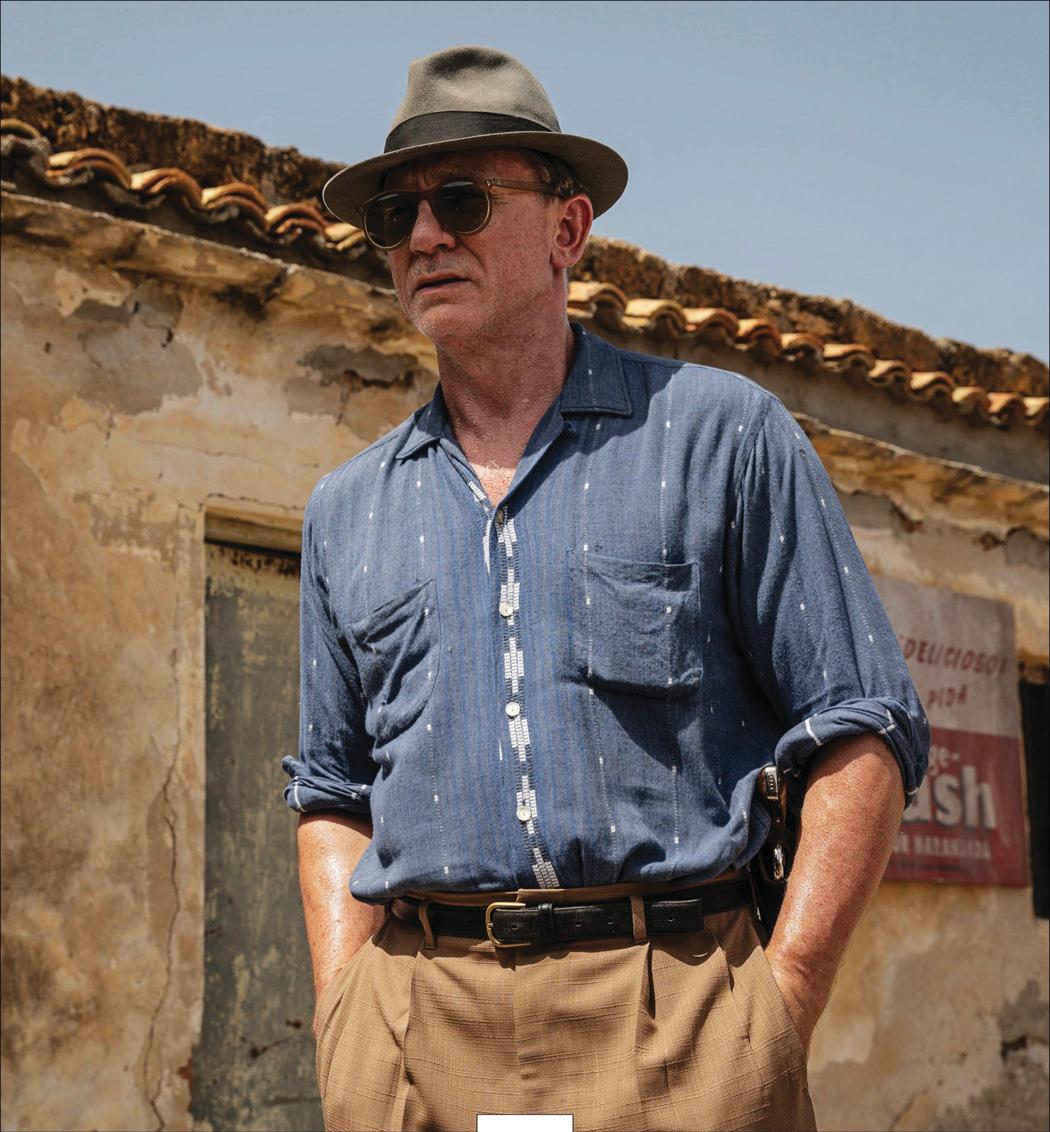With Queer, opening Nov. 27, Guadagnino has achieved not quite the impossible but the unlikely: he's rendered Burroughs' freewheeling prose into a coherent film. Set in early-'50s Mexico City, Queer follows Burroughs' literary alter ego William Lee (played by a multivalent Daniel Craig) as he pursues a younger man, Eugene Allerton (Drew Starkey), who seems impenetrable until he's not. The courtship takes them into the wilds of South America and finds Lee blazed on alcohol, heroin, and psychedelics. The book is a sequel to 1953's Junkie and went unpublished for decades. Craig's performance is big, sometimes explosively so, and requires not only affected charm, but also deep sadness, the physical turmoil of opiate withdrawal, and some bumbling in the jungle. "We all were exhausted by the end," said Craig. "We were all just hanging in rags by the time we finished."
Justin Kuritzkes, the writer of Guadagnino's other 2024 release, Challengers, adapted Burroughs' novel into Queer's screenplay. "I was trying to be a medium between these two brilliant queer artists: William Burroughs on the one hand and Luca on the other," he says. That involved heaps of artistic license-Kuritzkes fleshed out the sex scenes, inserted surreal sequences that allude to the shooting death of Burroughs' wife Joan Vollmer, for which he was convicted in absentia; and teased out the third act beyond what Burroughs merely suggested. Dr. Cotter, for example, "a small, wiry man in his middle fifties" living in the Ecuadorean jungle, becomes a woman, played with relish by a greasy-haired, dirt-speckled Lesley Manville.
At the same time, much of the film is doggedly faithful to Burroughs' book, transplanting chunks of dialogue and tracing its overall arc. Guadagnino's Queer is at once a tribute and an extension, a queering of the very act of adaptation. "You adhere to the book because it's important to adhere to the source material," explains Craig. "But as artists, it's our job to interpret and to expand."
QUEER DESCRIBES WAY MORE than the sexuality of its protagonist-it's practically the film's ethos. In many ways, this movie is queer as in askew, or deviating from a recognizable form. Almost all of it was shot at Cinecittà Studios in Rome, which lends an old Hollywood movie-set vibe to its gritty content that would never have gotten past the Production Code of the story's own era. And then there's Craig's depiction of Lee, which doesn't call for a strict impersonation of Burroughs as he was in the '50s ("Thank Christ!" says the actor), but was partly inspired by late-in-life candid footage of Burroughs "high and giggling and being mischievous." Queer also queers the prototypical love story: Lee is smitten with Allerton, while Allerton stays mostly aloof, spurning Lee in public in favor of a young woman and sharing views on gay culture that sow doubt as to his own sexuality. Yet Guadagnino and his cast insist this is a story not of unrequited love but of unsynchronized love.
image [https://cdn.magzter.com/1452683603/1732801082/articles/G56BGfKlL1732883404866/vOL568XSi1732883496660.jpg]
In a joint Zoom interview in November, both Guadagnino and Craig downplayed the importance of Lee's queerness, which came as a surprise given the film's title, for one thing. "For me, this is not about gay or homosexuality, it's more about: Are we ready for connection? What is preventing these characters from having a full-blown connection?" says Guadagnino. "In a way, the sexuality of the protagonist, it's down the list of important things," adds Craig. "It is the emotional journey of these people. And that's what we concentrated on while making the film."
To be clear, the movie's sex is definitive and copious. Those who were frustrated by the camera's pronounced panning away in Guadagnino's previous May-December gay romance Call Me by Your Name should be satiated by Queer's frankness. Both of Craig's onscreen sex partners, Starkey and singer-songwriter Omar Apollo, who makes his film debut in Queer, appear fully nude-Starkey says he wore a prosthetic, though Apollo would not confirm or deny the veracity of his cinematic anatomy. ("They're young. They're young and beautiful," says Craig when asked why he didn't go full frontal as well.) Craig credits laughter between takes with easing the tension. Plus, Starkey says movement rehearsals for a kind of dance sequence toward the end of the film broke the ice. "We got to embarrass ourselves in front of one another-and have little accomplishments in the choreography with each other. That imbued its way into everything."
THERE WAS A TIME when a straight actor playing a gay character was considered a career risk. There was a time when it was considered controversial. Now, though it doesn't raise as many eyebrows, it's still worth noting that Guadagnino tapp...


